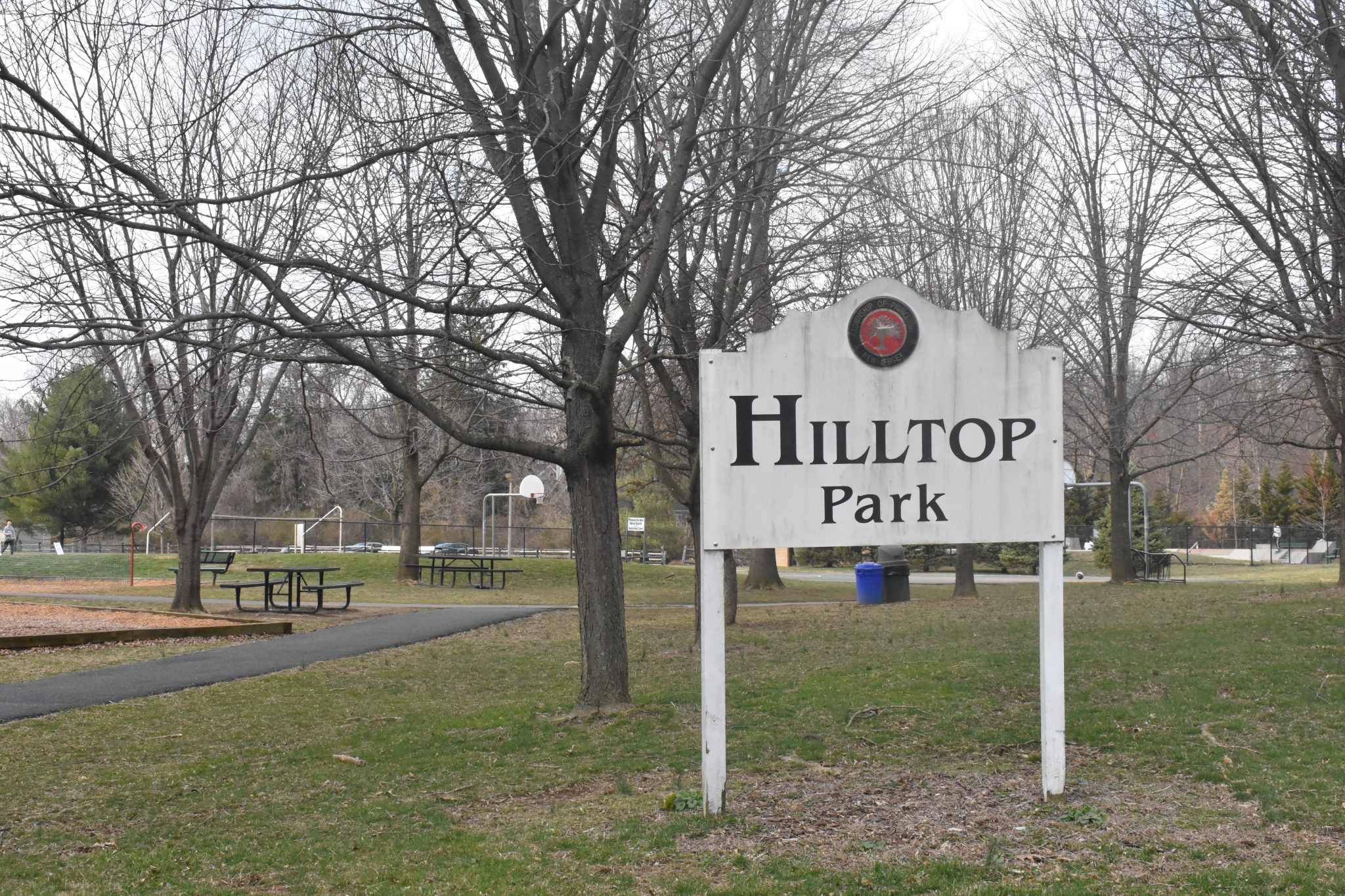The fate of proposed improvements to Hilltop Park, which would have included a synthetic turf athletic field and new field lighting, has landed squarely in the Princeton Council’s court.
The Princeton Recreation Commission announced at its March 25 meeting that the project had been put on hold – one day after the Princeton Environmental Commission approved a motion stating that it did not recommend synthetic turf on any athletic fields in the town’s municipal parks.
Acting Municipal Administrator Robert Bruschi said the Hilltop Park improvement project is on a temporary hold until officials can determine the best way to proceed. Hilltop Park is on Bunn Drive.
“At the staff level, we are evaluating where we are in the project, what any next steps would be, and of course reaffirming all of this with the governing body,” Bruschi said.
It is possible that the town may go ahead with some aspects of the project, while also factoring in a Mercer at Play grant for $500,000 that would pay for some of the improvements, he said.
The entire project, which also includes a new chain link fence, benches for players, bleachers, sidewalks and expanded parking, is estimated to cost up to $1.5 million.
“All of this is open for discussion, and ultimately we will follow the direction from Mayor and Council,” Bruschi said.
At issue is a synthetic turf field or a natural grass field. The park is anchored by a natural grass field.
At its March 24 meeting, Princeton Environmental Commission member Heidi Fichtenbaum outlined some of the commission’s findings when it compared the cost of installing synthetic turf – as proposed by the town – against natural grass fields.
Including a synthetic turf field would cost an estimated $1.9 million, including hard costs and soft costs – bonding, insurance, permits and other costs. A grass field would cost about $1.1 million, including hard and soft costs, Fichtenbaum said.
Maintenance costs for synthetic turf also exceed the costs to maintain a grass field, she said. To replace the turf field after about eight or 10 years would cost about $775,000, while re-sodding a grass field would cost about $500,000.
Synthetic turf needs to be cleaned. Chemicals would be applied to sanitize it, which would also wash into the water, Fichtenbaum said. Herbicides and pesticides may be applied to grass field and would also wash into the waterways, but that could be remedied if organic practices were substituted, she said.
“There is no question” that synthetic turf is hotter than grass, and water has to be applied to cool it, Fichtenbaum said. Even the most environmentally-friendly synthetic turf is made of plastic, and at this point in time it cannot be recycled, she said.
Evan Moorhead of the Princeton Recreation Department countered that there was never a statement that a synthetic turf field would be less expensive than a natural grass field. That was never the goal, he said, adding that synthetic turf fields are safe and durable.
Along with new lights, the field would be able to be used more hours of the day, Moorhead said. Studies show that light spillage from the new lights would be less than from the existing lights.
Residents of the nearby Campbell Woods townhouse development and the Princeton Community Village affordable housing development opposed the Hilltop Park improvements. The residents were concerned that the synthetic turf field would attract more traffic from teams and their supporters, and that the field lights would shine into their homes.
Moorhead said the Open Space and Recreation Element of the Princeton Master Plan identified the need for more athletic fields. The Master Plan suggested installing a synthetic turf field, and that is the genesis for the proposal to convert the grass field at Hilltop Park into a synthetic turf field, he said.
According to the revised Open Space and Recreation Element of the Master Plan adopted in November 2011, recreation needs have changed over time as various sports increased or decreased in popularity. Since 1996, the diversity of team sports and the schedule of multi-season sports has increased, “and with them, the demand for additional fields and facilities,” it stated.
“The (Princeton) Joint Recreation Board has also identified the need to rotate fields and to permit some fields to ‘rest.’ If new fields are not provided to meet the growing need, other alternatives such as synthetic turf fields and field lighting will need to be investigated,” the Open Space and Recreation Element stated.
A needs analysis also revealed the need for more athletic fields, but the town is not in a position to add more fields, Moorhead told the attendees of the Princeton Environmental Commission meeting.
The “next best solution” would be to convert the grass field at Hilltop Park into a synthetic turf field because it would allow the field to be used for more hours of the day, he said.
“We just want to provide the best possible fields,” Moorhead said.

